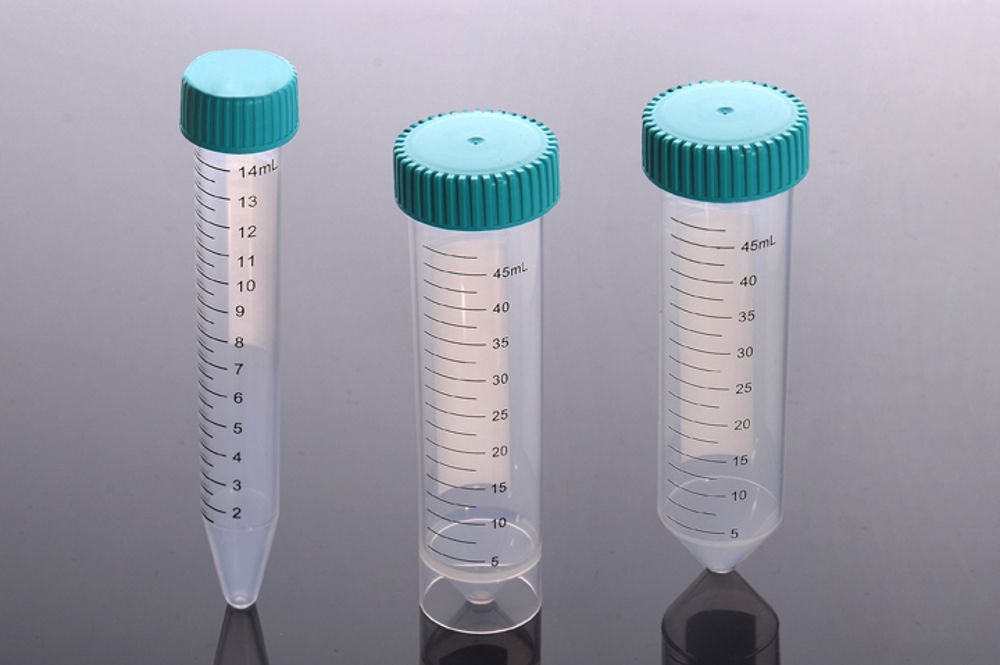Centrifuge tubes are indispensable tools in laboratories worldwide, playing a crucial role in various scientific and medical research processes. In this comprehensive guide, we’ll delve into what centrifuge tubes are, their types, uses, and tips for choosing the right ones for your needs.
What is a Centrifuge Tube?
A centrifuge tube is a cylindrical container used in centrifugation, a process that separates components of a mixture based on their densities by spinning them at high speeds. These tubes are designed to withstand the centrifugal forces generated by centrifuges, ensuring the safe and efficient separation of samples.
Types of Centrifuge Tubes
1. Microcentrifuge Tubes
Microcentrifuge tubes, also known as Eppendorf tubes, are small tubes typically used for volumes ranging from 0.5 to 2.0 milliliters. They are commonly employed in molecular biology and biochemistry labs for tasks such as sample storage, reaction preparation, and enzyme reactions.
2. Conical Centrifuge Tubes
Conical centrifuge tubes are larger, usually available in 15 mL and 50 mL sizes. Their conical shape helps in the easy collection of sediment at the bottom, making them ideal for applications that require pellet formation, such as cell culture and clinical sample processing.
3. Round-Bottom Centrifuge Tubes
Round-bottom centrifuge tubes are designed for general centrifugation applications. They are less common than conical tubes but are preferred in certain protocols where a conical shape is not necessary.
4. Glass Centrifuge Tubes
Glass centrifuge tubes are preferred in applications requiring chemical resistance and high temperature tolerance. They are less prone to deformation under high-speed centrifugation compared to plastic tubes.
5. Plastic Centrifuge Tubes
Plastic centrifuge tubes, made from materials such as polypropylene or polyethylene, are widely used due to their durability, chemical resistance, and transparency. They are also cost-effective and available in various sizes and configurations.
Uses of Centrifuge Tubes
Centrifuge tubes are versatile tools used in various scientific disciplines. Here are some of their primary uses:
1. Sample Preparation
Centrifuge tubes are essential in preparing samples for analysis. By spinning samples at high speeds, they help in separating different components based on density, making it easier to isolate desired substances.
2. Pelleting Cells and Organelles
In cell biology, centrifuge tubes are used to pellet cells, organelles, and other particulate matter from biological samples. This process is crucial for studying specific components within cells, such as nuclei, mitochondria, and lysosomes.
3. Purification of Nucleic Acids
Centrifuge tubes play a key role in the purification of DNA and RNA. During the extraction process, centrifugation helps in separating nucleic acids from proteins and other contaminants.
4. Protein Isolation
In biochemistry, centrifuge tubes are used to isolate and purify proteins from complex mixtures. Techniques such as ultracentrifugation allow for the separation of proteins based on their size and density.
5. Clinical Diagnostics
Centrifuge tubes are vital in clinical laboratories for processing blood samples, urine, and other bodily fluids. They help in separating plasma, serum, and other components for diagnostic testing.
Choosing the Right Centrifuge Tube
Selecting the appropriate centrifuge tube for your application is crucial for achieving accurate and reliable results. Here are some factors to consider:
1. Material
The material of the centrifuge tube should be compatible with your samples and the chemicals you are using. Polypropylene tubes are generally suitable for most applications due to their chemical resistance and durability. However, glass tubes may be necessary for high-temperature applications or when working with aggressive solvents.
2. Volume Capacity
Choose a centrifuge tube that can accommodate the volume of your samples. It’s essential to avoid overfilling the tubes, as this can lead to spillage and contamination. Ensure there is enough headspace to allow for proper mixing and expansion of the sample during centrifugation.
3. Closure Type
Centrifuge tubes come with various closure types, including screw caps, snap caps, and plug seals. Screw caps provide a secure and leak-proof seal, making them ideal for long-term storage and transportation. Snap caps and plug seals offer convenience for quick access and are suitable for routine laboratory use.
4. Sterility
For applications requiring aseptic conditions, opt for sterile centrifuge tubes. These tubes are pre-sterilized and individually packaged to prevent contamination. They are particularly important in clinical and microbiological applications.
5. Graduations and Labeling
Graduated centrifuge tubes with clear volume markings facilitate accurate measurement of samples. Additionally, tubes with labeling areas allow for easy identification and tracking of samples, which is crucial for maintaining accurate records.
Best Practices for Using Centrifuge Tubes
To ensure the best results and maintain the integrity of your samples, follow these best practices when using centrifuge tubes:
1. Balancing the Centrifuge
Always balance the centrifuge by placing tubes of equal weight opposite each other. This prevents imbalances that can cause damage to the centrifuge and compromise the separation process.
2. Proper Sealing
Ensure that the caps are securely fastened to prevent leakage and contamination. For high-speed centrifugation, consider using screw caps or sealing films for added security.
3. Centrifugation Parameters
Follow the recommended centrifugation parameters, including speed (RPM) and duration, for your specific application. Exceeding the recommended speed can cause tube breakage or sample degradation.
4. Handling and Storage
Handle centrifuge tubes with care to avoid cracks and deformations. Store them in a cool, dry place away from direct sunlight to maintain their structural integrity and prevent degradation of sensitive samples.
Conclusion
Centrifuge tubes are fundamental tools in scientific research and clinical diagnostics, enabling precise and efficient sample separation. By understanding the different types of centrifuge tubes and their specific applications, you can make informed decisions to optimize your experimental outcomes. Always consider factors such as material, volume capacity, closure type, sterility, and labeling when selecting centrifuge tubes for your laboratory needs. Adhering to best practices in their use will ensure reliable results and the safety of both your samples and equipment.

